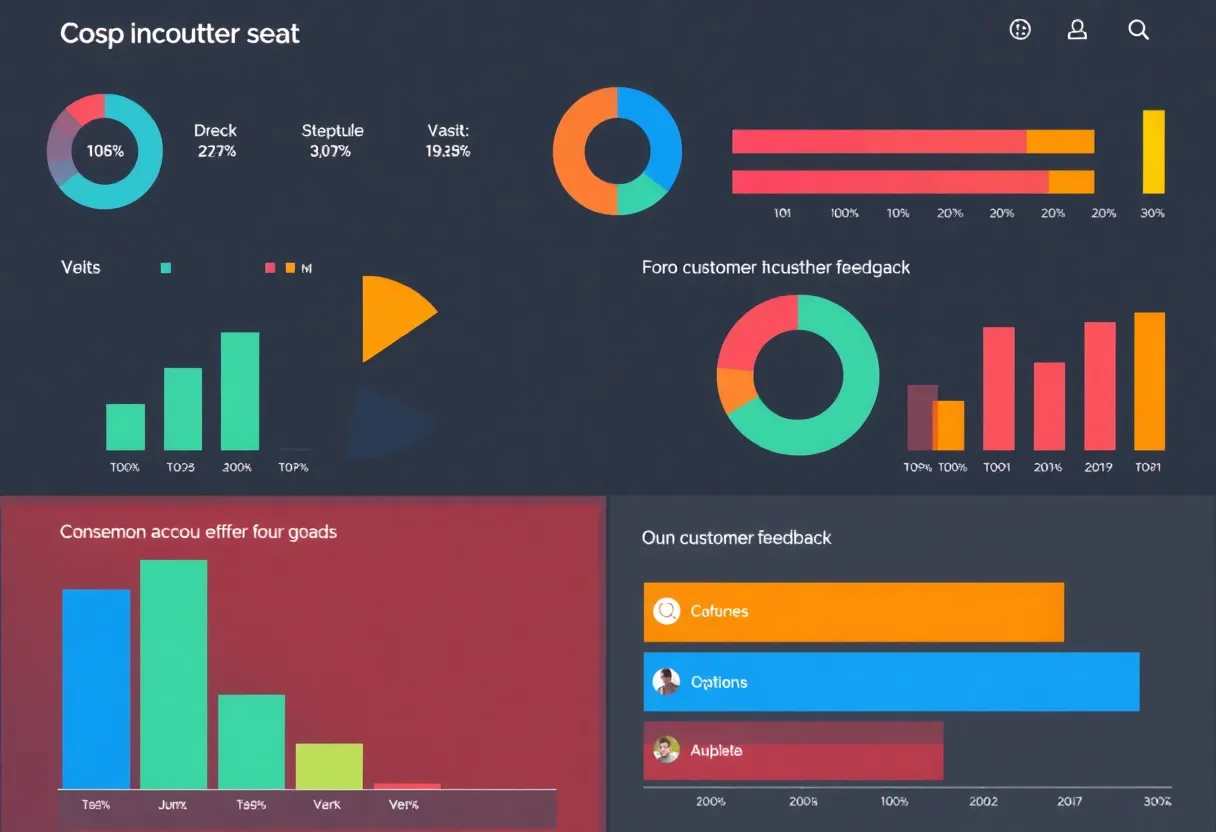How Can Customer Feedback Shape Your Digital Marketing Strategy?
In an age where digital interactions dominate consumer behavior, customer feedback has emerged as a critical resource for companies wanting to refine their marketing strategies. Understanding what customers think about products, services, or overall brand experiences can separately become the cornerstone for enhancing brand loyalty, increasing sales, and improving user experience.
The Importance of Customer Feedback
Customer feedback plays a multifaceted role in shaping digital marketing. It offers insights that are both actionable and informative. When a business actively listens to its customers, it can:
- Identify pain points: Understanding specific issues customers face can lead businesses to address them promptly.
- Adjust product offerings: Customer insights can highlight areas needing improvement or innovation.
- Enhance customer relationship: Genuine responsiveness cultivates trust and loyalty.
Types of Customer Feedback
Not all feedback is created equal. Different types of customer feedback can yield various insights:
1. Surveys and Questionnaires
These tools can be used to gauge customer satisfaction. It is possible to design questions that target specific aspects of the customer experience. Ensuring questions are clear and focused helps obtain relevant data.
2. Online Reviews
Platforms such as social media, Google, and Yelp are rich sources of consumer sentiment. Regularly monitoring these reviews can provide insights into brand perception.
3. Social Media Interactions
Comments, likes, and shares on social media platforms illuminate customer engagement. Brands can analyze social media sentiment to measure the effectiveness of campaigns.
4. Direct Feedback via Support Channels
When customers contact support, their concerns can be gathered and analyzed to improve service. Chatbots can also provide immediate responses while collecting valuable data.
5. Focus Groups
Bringing customers together for discussions allows businesses to dive deeper into customer opinions and suggests enhancements or yet-to-be-considered features.
How to Analyze Customer Feedback
Simply collecting feedback doesn’t suffice; it needs to be comprehensively analyzed to acquire meaningful insights. Here are key steps to effectively analyze customer feedback:
1. Categorization
Organizing feedback into categories helps in pinpointing recurring themes. Companies can analyze data on elements such as customer satisfaction, product quality, or service effectiveness.
2. Sentiment Analysis
Sentiment analysis tools can evaluate the emotional tone behind customer comments. Understanding if feedback is positive, negative, or neutral can significantly influence marketing strategies.
3. Trend Identification
Consistency in feedback over time can reveal trends regarding consumer preferences or prevalent issues. Identifying these trends allows businesses to predict future behaviors accurately.
4. Performance Metrics
Linking feedback to key performance indicators (KPIs) delivers a quantifiable aspect to qualitative data. Metrics such as response time and resolution rates can indicate levels of customer satisfaction.
Incorporating Feedback into Marketing Strategy
Marketing teams need to act on insights derived from customer feedback. Some actionable steps include:
1. Content Creation
Consumer feedback can inspire content marketing strategies. If customers express interest in specific topics, marketing teams can create relevant blogs, social media posts, or FAQs.
2. Product Development
Direct consumer suggestions on features can lead to new product lines or improvements in existing offerings. Listening and adapting show that a brand values its customers’ opinions.
3. Personalization
Feedback enables businesses to create targeted marketing campaigns. Personalization increases engagement and conversion rates by appealing directly to customer preferences.
4. Improving Customer Experience
Marketing strategies can be adjusted to enhance user experience based on feedback. If consumers indicate difficulty in navigating a website, for example, organizations may opt to redesign the user interface.
5. Development of Loyalty Programs
Understanding what customers value enables brands to create tailored loyalty programs. Feedback can shed light on rewards that genuinely interest consumers, thereby increasing participation.
Case Studies of Feedback-Driven Strategies
The effectiveness of customer feedback is exemplified through various successful case studies. These examples highlight how businesses have used insights to significantly enhance their digital marketing strategies.
Example 1: A Major Retailer
A global retailer utilized customer surveys to determine dissatisfaction with its online checkout process. By implementing streamlined processes and clearer instructions, the company witnessed an increase in conversion rates by 25% within two months.
Example 2: A Mobile App Developer
After analyzing user reviews, a mobile app developer discovered that users were frustrated with specific features. The company promptly revamped the app based on this feedback, resulting in a 40% increase in user retention within a year.
Example 3: An E-commerce Brand
This brand capitalized on social media sentiment analysis to launch targeted ads based on customer interests. The result was a dramatic increase in engagement rates, significantly improving their return on investment (ROI).
Challenges in Using Customer Feedback
While customer feedback serves as a valuable asset, it is not without challenges. Companies should be aware of the following obstacles:
1. Information Overload
With multiple channels for feedback, businesses may struggle to sift through vast amounts of data. Establishing a structured process for data collection and analysis is crucial.
2. Biased Feedback
Some feedback may stem from emotionally charged customers, yielding unrepresentative insights. A comprehensive view incorporating various feedback types assists in mitigating bias.
3. Implementation Issues
Not all feedback leads to easy implementation. Balancing customer requests and organizational capabilities can prove challenging, requiring a well-thought-out approach.
Conclusion
In the rapidly-evolving landscape of digital marketing, customer feedback is invaluable. It offers crucial insights that shape strategies focused on customer-centric practices. From enhancing products to refining marketing tactics, actionable feedback can lead to increased sales, strong brand loyalty, and improved customer experiences.
By systematically gathering, analyzing, and implementing customer feedback, businesses position themselves to thrive in an increasingly competitive marketplace. Listening to customers not only drives success but fosters a positive relationship between brands and the consumers they serve.
Author: STAFF HERE NOVI WRITER
NOVI STAFF WRITER The NOVI STAFF WRITER represents the experienced team at HERENovi.com, your go-to source for actionable local news and information in Novi, Oakland County, and beyond. Specializing in "news you can use," we cover essential topics like product reviews for personal and business needs, local business directories, politics, real estate trends, neighborhood insights, and state news affecting the area—with deep expertise drawn from years of dedicated reporting and strong community input, including local press releases and business updates. We deliver top reporting on high-value events such as Motor City Comic Con, Michigan State Fair, and Novi Home and Garden Show. Our coverage extends to key organizations like the Novi Chamber of Commerce and Novi Community Foundation, plus leading businesses in automotive, technology, and manufacturing that power the local economy such as Gentherm, Stoneridge, and Daifuku North America. As part of the broader HERE network, including HEREDetroitMI.com, HEREGrandRapids.com, HERENorthville.com, and HEREPlymouth.com, we provide comprehensive, credible insights into Michigan's dynamic landscape.







